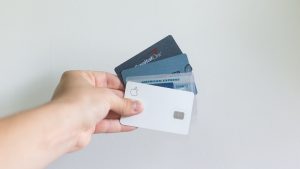As a forex trader, it is important to understand the tax implications of your trading activities. The Internal Revenue Service (IRS) requires all forex traders to file taxes on their profits and losses. Filing taxes as a forex trader can be a complex process, but with proper guidance, you can avoid mistakes that could lead to penalties and interest charges. This article explores how to file taxes as a forex trader.
1. Determine your tax status
The first step in filing taxes as a forex trader is to determine your tax status. If you are a full-time forex trader, you are considered a self-employed individual and must file taxes as such. This means you will need to file a Schedule C form (Form 1040) to report your income and expenses. If you are a part-time forex trader, you may be considered a hobbyist and will need to report your trading activity on a Schedule A form (Form 1040).
2. Keep accurate records
Keeping accurate records of your forex trading activity is crucial for filing taxes. You should maintain a detailed record of all your trades, including the date, time, currency pair, amount traded, and profit or loss. You should also keep track of any expenses related to your trading, such as trading platform fees, data subscriptions, and office expenses. By maintaining accurate records, you will be able to accurately calculate your profits and losses and determine your tax liability.
3. Calculate your profits and losses
To determine your tax liability as a forex trader, you need to calculate your profits and losses. Your profits and losses are calculated by subtracting your total losses from your total gains. If your losses exceed your gains, you may be able to deduct the excess losses from your other income, subject to certain limitations. You may also be able to carry forward any excess losses to future tax years.
4. Report your forex trading activity on your tax return
Once you have determined your tax status, kept accurate records, and calculated your profits and losses, you are ready to report your forex trading activity on your tax return. If you are a self-employed forex trader, you will need to report your income and expenses on a Schedule C form. If you are a part-time forex trader, you will need to report your trading activity on a Schedule A form. You will also need to attach any supporting documentation, such as trade logs and receipts.
5. Pay your taxes
After reporting your forex trading activity on your tax return, you will need to pay any taxes owed. If you are a self-employed forex trader, you may be required to make estimated tax payments throughout the year to avoid penalties and interest charges. If you are a part-time forex trader, you may be able to pay any taxes owed when you file your tax return.
In conclusion, filing taxes as a forex trader can be a daunting task, but with proper guidance, it can be done successfully. To file taxes as a forex trader, you need to determine your tax status, keep accurate records, calculate your profits and losses, report your trading activity on your tax return, and pay any taxes owed. By following these steps, you can avoid mistakes that could lead to penalties and interest charges. It is recommended that you seek the advice of a tax professional to ensure that you are properly filing your taxes as a forex trader.






